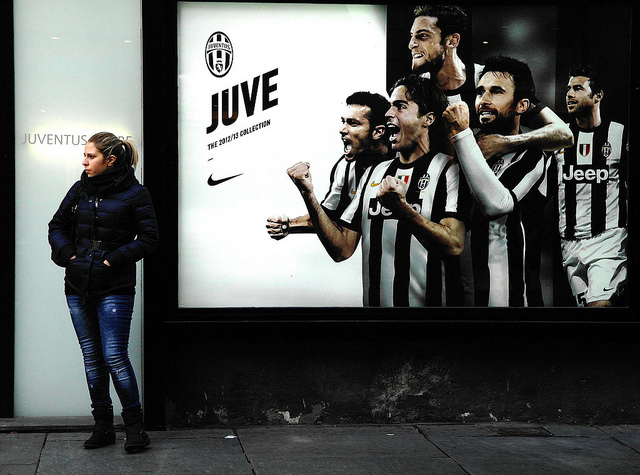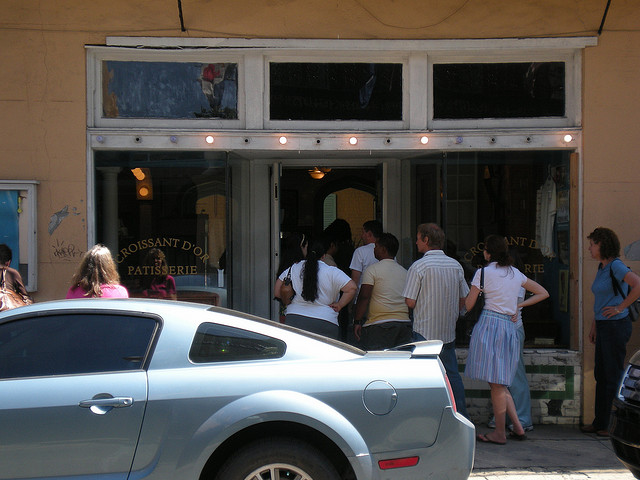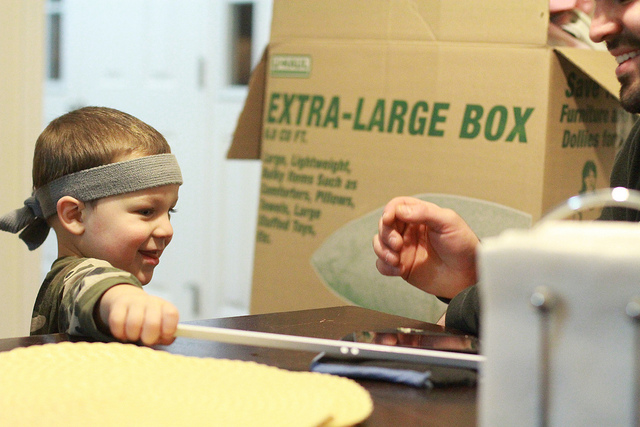Unlock the Magic in Your Story Now
Get the Free 20 questions to Ask Before Launching Your Idea workbook when you sign up for occasional updates.
Get the Free 20 questions to Ask Before Launching Your Idea workbook when you sign up for occasional updates.
Articles filed in: Marketing
Changing Minds And The Decision Timeline
filed in Marketing, Storytelling, Strategy
 When was the last time you switched brands? The reality is we mostly make decisions on autopilot and we don’t often change our minds. When change happens it doesn’t happen in an instant—however hopeful we as marketers might be that it does.
When was the last time you switched brands? The reality is we mostly make decisions on autopilot and we don’t often change our minds. When change happens it doesn’t happen in an instant—however hopeful we as marketers might be that it does.
We know for example, that the transition to bottled water didn’t happen overnight and yet every day we attempt to convince potential customers to switch or choose today, by offering more proof that our brand is different and better.
Changes of opinion and in attitude and behaviour take a very long time. There’s a whole sequence of events and tiny shifts that happen along the decision timeline from brand awareness to brand affinity.
Our job is to look for ways to understand and influence what happens in the middle, not simply to try to make change happen at the very start.
Image by Chris Goldberg.
Where Your Story Starts
filed in Marketing, Storytelling
 The question we mostly try to address when we set out to tell our business or product story is what we want the customer to know about our brand.
The question we mostly try to address when we set out to tell our business or product story is what we want the customer to know about our brand.
The better place to begin is by understanding what the customer wants to believe about herself and where our brand could potentially fit into her story.
It’s tempting to want to broadcast—to be immediately noticed and understood. The irony is we get to that place by first understanding and seeing the person on the other side of the interaction.
First Impressions Vs. Lasting Impact
filed in Marketing, Storytelling, Strategy
 “What’s that new cafe like?” asked a business colleague from out of town.
“What’s that new cafe like?” asked a business colleague from out of town.
His question got me thinking about how much a negative response from a single customer could cost a business. What’s the lasting impact of a one bad experience?
We can invest time and energy and money into the things we believe will create the right first impression—professional logo design, the perfect decor or quality packaging. And yet it’s possible for one bad customer experience to taint everything for a very long time to come.
The flip side of course is that when you organise your business for lasting impact people will cross town and queue from 3am for one of your croissants because they know you will sell out in two hours.
First impressions get people through the door, what happens next is what keeps them coming back.
Image by Jerd Lngr.
The Three Sides Of Customer Experience
filed in Marketing, Storytelling, Strategy
 As boarding time came and went, it was clear that the flight wasn’t about to depart on time. The huge crowd of expectant passengers at the gate began to get restless. By the time the first announcement was made things were getting heated and when the call to collect refreshment vouchers went out resigned passengers had a million and one questions to ask.
As boarding time came and went, it was clear that the flight wasn’t about to depart on time. The huge crowd of expectant passengers at the gate began to get restless. By the time the first announcement was made things were getting heated and when the call to collect refreshment vouchers went out resigned passengers had a million and one questions to ask.
In the Business Lounge, things were a little uglier. Executives with important deadlines, meetings to attend or connections to make competed for the attention of the one customer service representative who was handling the situation. She tried to talk them down with as much information as possible—it didn’t help. Here’s why.
There are three elements at play in every service delivery situation:
1. Expectation.
2. Logistics.
3. Emotion.
In business we do reasonably well at framing expectations and communicating logistics. We competently communicate that this is what you paid for and this is what you will get, where and when. Where we fall down is dealing with the third and perhaps most important element—our customer’s emotions. Fear is a powerful thing and no amount of explanation, reason and logic can counteract its effect, which is why we need to train for empathy. This is hard, since the person dealing with the crisis might experience it three times every week—the customer only experiences it acutely, today and that’s why her reaction and her worldview seem unreasonable.
In any customer service situation ask yourself:
“How would I be feeling if this were me?”
“How would I be reacting right now?”
“What would I be saying and doing?”
You might find that you’re closer to your customers than you think.
Image by Rob M.
Do Your Actions And Story Align?
filed in Marketing, Storytelling, Strategy
 Have you ever seen the somber, suited doorman at Cartier chasing a thief, searching a customer’s bag or stopping a young woman from entering the store? Me neither.
Have you ever seen the somber, suited doorman at Cartier chasing a thief, searching a customer’s bag or stopping a young woman from entering the store? Me neither.
If he’s not doing that then why is he there?
Does the sales assistant at MontBlanc really need to wear a white glove to remove the pen cap before he hands it to the shopper to try?
Should the yellow sale signs at the $2 discount store really be that bright?
Why don’t Starbucks coffees come in plain old small, medium and large, instead of Tall, Grande, Venti?
Is there really any need for the velvet rope customers line up behind to buy coffee pods at Nespresso?
What difference would it make if Apple renamed the ‘Genius’ a customer service technician?
There’s a reason a hand crafted leather bag can’t be shipped in cheap plastic packaging and a drink in the bar with the best view of Hong Kong can’t cost less than $20.
Everything, from the words you use in an automated email, to colour of your packaging is your brand story. Every detail needs to be consistent with the story you want your customers to hear and believe.
Tomorrow is the last day to register for The Story Strategy Course, we start this week.
Image by Garry Knight.
The Simplest Way To Add Value
filed in Marketing, Storytelling, Strategy
 We just moved house. You can probably empathise—so many logistics to arrange and tiny details to keep in your head, no matter how much help you have.
We just moved house. You can probably empathise—so many logistics to arrange and tiny details to keep in your head, no matter how much help you have.
By 3pm on moving day we had Internet (no mean feat). At about 9pm we realised there was no hot water. Too late to contact anyone of course, so it was cold showers all round. But hey, we had Internet. Day two involved trying to reset the boiler and finding the contact details of the guy who had installed it. Two calls, some over the phone instructions later and we were up and running.
While I was standing in that cold shower it struck me that it would be very easy for the real estate agent who sells a property to add value to the transaction for both buyer and seller, by thinking about what the customer is about to do next. The agent could create a simple fill-in-the-blanks pro-forma inviting the seller to list contact details of tradespeople who have worked on or maintained the property, anyone from the window cleaner to the company who installed the security system. The agent would also avoid having to pick up enquires about these things in the weeks following the sale.
Our customer service often stops at the point of sale or delivery, when we think the transaction has ended. It doesn’t have to. Imagine a world where little boys were happier on Christmas day because people were reminded to buy batteries for the remote control car they ordered. A place where no new lamp arrived without a light bulb and nobody had a cold shower on moving day.
What is your customer about to do next and help him to do it?
Image by Kelly Polizzi.
The New Rules Of Email Marketing
 The old rules are broken. Familiar email marketing tactics might enable us to extract one more sale, but they are definitely not designed to respect our customers—the people who pay our bills, the same people we hope to matter to. They are busy and smart. We should treat them that way.
The old rules are broken. Familiar email marketing tactics might enable us to extract one more sale, but they are definitely not designed to respect our customers—the people who pay our bills, the same people we hope to matter to. They are busy and smart. We should treat them that way.
THE NEW RULES OF EMAIL MARKETING
1. If you wouldn’t do it face-to-face don’t do it in an email marketing campaign.
You wouldn’t dream of knocking on the same customer’s door seven times in ten days (or three times in one day). Why is it okay to do this via email?
2. Consider the people who have given you permission to email them as individuals, who trust you.
Using collective terms like ‘my list’, ‘my followers’ and ‘my community’ distances you from the experiences, problems and feelings each potential customer has. Generalisations imply ownership, not leadership and addressing the collective stops you from creating the kind of messages, products and services they want.
3. Run everything through a generosity filter.
Ask yourself if your tactics are customer-serving or self-serving. Check that you’re not justifying a deluge of emails (that will generate more sales), by rationalising about dissatisfied customers missing out. Make giving before getting your goal.
4. Don’t say anything in an email (marketing campaign or otherwise), that you wouldn’t say to the reader’s face.
This is harder than you think. It’s easy for exaggerations to morph into half-truths or worse when you’re not looking someone in the eye. Act like you’re looking them in the eye.
5. Evaluate whether your email marketing strategy is aligned with your big picture business strategy.
Is attracting and converting ‘the most people’ today your number one priority? Why?
If not, what is?
6. Choose your metrics wisely.
When you focus on the sales numbers alone, it makes your marketing tactics appear desperate and stifles your creativity. Make what you measure reflect your values and trust your instincts.
7. Spend twice as much time finding ways to see your customers, as you do asking them to see you.
This blueprint is a good place to start.
8. Don’t feel compelled to follow the crowd.
You don’t have to use the tactics that other marketers use. Three tier pricing that gives the illusion of choice, or untruthfully creating a false sense of urgency or scarcity to make people fear missing out, will get you more sales today, but maybe you’d rather play the longer game?
Image by Axel Hartmann.
The Opportunity Equation
filed in Marketing, Storytelling, Strategy
 In order for a business to take advantage of an opportunity four factors must be in place.
In order for a business to take advantage of an opportunity four factors must be in place.
The formula looks like this.
VISION + RESOURCES + SKILLS + PLAN = OPPORTUNITY REALISED
An opportunity can only be realised when you have the vision to recognise it and the resources, skills and plan to execute on it. And yet many companies with these resources who see opportunities don’t take advantage of them.
Why is that?
It turns out that the most important driver of change is the willingness to make it happen. If everyone concerned with realising the opportunity doesn’t want get behind it, then the chances of success are slim.
Understanding the problem to solve is one thing. Caring enough to want to do it is key.
Light bulb moments are overrated.
Image by Jens Schott Knudsen.
How Will You Get To Where You Want To Go?
filed in Marketing, Storytelling, Strategy
 There are always things we know we’d like to change or improve about our businesses.
There are always things we know we’d like to change or improve about our businesses.
Often we’re just not sure what’s missing, how to begin or even where to start.
To make change happen you need to have the vision to know where you’re going, the skills and resources that enable you to get there and a plan to drive it forward.
The difference between the people who seek change and the people who make it happen is they understand where they want to go and why, and they have a strategy for getting there.
They also rarely do it alone.
This is the work I help business leaders from startups to Fortune 500s do with one-on-one consulting. Readers have been asking me to find a way to help them too, by bridging the gap between the lessons in my books and the positive impact one-on-one consulting creates for companies and entrepreneurs alike—today I’d like to share that way with you.
The Story Strategy Course could be the kickstart you and your business need. It’s a step-by-step program that enables you to dig deeper than you have probably ever done before on the road to building and the business you want.
During the course you will discover how to differentiate and market your business by telling your story in a way that powerfully resonates with your customers. You will learn the secret of every beloved brand—how to create products and services your customers love. When you do that you don’t have to spend so much time trying to make people love those things.
You will be guided through the new Story Strategy Blueprint over the course of four weeks. You will also get access to brand new practical exercises, PDFs, and hours of original audio interviews that I’ve conducted with thought leaders and entrepreneurs from Seth Godin and Antonio Zea, Global Director of Football at Under Armour, to my friend Mark, who started a bakery in his back yard. There will be two group webinars with me, and a dedicated peer-to-peer network in Slack. You will also have the opportunity to ask me specific questions by email for the duration of the course.
If you want to build a meaningful business that becomes a beloved brand
The Story Strategy Course will show you how. Registrations are open now.
I am excited to have the chance to work with you, to help you differentiate your brand, build the business you want and to see your ideas fly.
Image by Mark Notari.
The Downside Of Buying Attention
filed in Marketing, Storytelling, Strategy
 Some of the most sad and frustrated emails I get are from business owners who have invested money to get people to visit their websites. Often they have paid for search engine optimisation or Google AdWords and waited for the traffic to come—which is does, it just doesn’t always convert or deliver the result the business owner had hoped for.
Some of the most sad and frustrated emails I get are from business owners who have invested money to get people to visit their websites. Often they have paid for search engine optimisation or Google AdWords and waited for the traffic to come—which is does, it just doesn’t always convert or deliver the result the business owner had hoped for.
Yes, there are ways to buy attention and get people to your website—a ton of tricks and tactics, but what happens then?
What will make them stay, never mind buy?
Why should they trust you?
How are you demonstrating that above all of the other businesses that they will visit online today, that you are the one to solve their problem?
A marketing strategy has to go beyond getting people to look in the window.
If visitors are walking away it means we haven’t given them a reason to stay.
They are looking for a reason. It’s our job to give it to them.
Image by Hamed Masoumi.